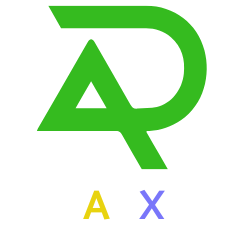What is Bid Shading?
The Basics of Bid Shading in Digital Advertising
Bid shading is a sophisticated technique used by demand-side platforms (DSPs) and some supply-side platforms (SSPs) to optimize bidding in programmatic advertising. This method calculates a balanced bid price, typically between the highest bid and the second-highest bid, ensuring advertisers pay less than the full amount in first-price auctions. By leveraging historical data, such as winning bid rates and ad placement performance, bid shading helps advertisers avoid overpaying while maintaining competitive bids.
Why Did Bid Shading Emerge?
The Shift from Second-Price to First-Price Auctions
The transition from second-price to first-price auctions created a need for bid shading. In second-price auctions, advertisers paid slightly more than the second-highest bid, but first-price auctions require paying the full bid amount. This shift led to higher costs for advertisers and dissatisfaction with inflated prices. Bid shading emerged as a solution, offering a middle ground that benefits media buyers by reducing costs without compromising their chances of winning ad placements.
How Does Bid Shading Work?
The Role of Algorithms in Predicting Optimal Bids
Bid shading relies on advanced algorithms to analyze historical bidding data. These algorithms predict the “sweet spot” for bids, balancing cost efficiency and competitiveness. For example, if one advertiser bids $10 and another bids $5, bid shading might suggest a winning bid of $7.50 instead of the full $10. This approach minimizes overspending while maintaining win rates, making it a valuable tool for advertisers navigating first-price auctions.
Key Metrics Used in Bid Shading
- Historical clearing prices
- Ad unit size and format
- Win rates and click-through rates
By analyzing these factors, DSPs can provide advertisers with more precise bidding strategies tailored to specific ad placements.
Benefits of Bid Shading for Advertisers
Cost Savings and Efficiency
Advertisers can save up to 20% on ad spend with bid shading, allowing them to allocate budgets more effectively. These savings enable brands to purchase additional impressions or invest in higher-quality inventory without exceeding their budget limits.
Improved Campaign Performance
Lower costs per impression (CPM) translate into better overall campaign performance. By optimizing bids, advertisers can achieve improved metrics such as cost-per-click (CPC) and cost-per-acquisition (CPA), driving higher ROI for their campaigns.
Challenges and Controversies Surrounding Bid Shading
Impact on Publishers’ Revenue
While bid shading benefits advertisers, it poses challenges for publishers. By reducing the amount paid for impressions, publishers may experience lower revenues compared to traditional first-price auction models. This dynamic creates a zero-sum game where advertisers’ savings often come at the expense of publishers’ earnings.
Conflicts of Interest with DSPs
Some DSPs charge fees based on hypothetical savings achieved through bid shading, raising concerns about transparency and fairness. Advertisers must carefully evaluate their DSP partners to ensure alignment with their goals and strategies.
Future Trends in Bid Shading
Adapting to a Cookieless World
As digital advertising moves away from reliance on ad IDs, DSPs are refining their bid shading algorithms to accommodate anonymous traffic and less-specific inventory signals. This evolution ensures that bid shading remains effective even in privacy-centric environments.
Enhanced Predictive Models
The continued development of AI-driven predictive models will further improve the accuracy of bid shading algorithms, enabling advertisers to achieve even greater cost efficiencies without sacrificing performance.
Is Bid Shading Right for You?
Balancing Cost Savings with Strategic Goals
Bid shading is a powerful tool that offers significant cost savings and improved campaign performance for advertisers navigating first-price auctions. However, it requires careful consideration of its impact on publishers and potential conflicts with DSPs. By understanding how bid shading works and aligning it with your advertising strategy, you can unlock its full potential while maintaining ethical practices in programmatic advertising.

